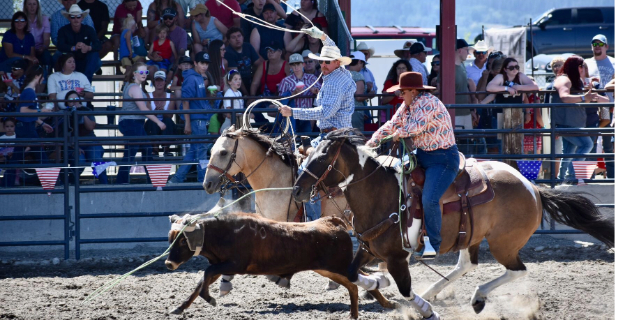Legend of the Blue Bucket Mine
Published 12:00 am Monday, April 24, 2006
By PEARL JONES
For the Baker City Herald
Nothing is more intriguing in history than a legend of riches that man can forever seek.
Eastern Oregon has just that, The Legend of the Blue Bucket Mine.
Although the exact location has never been proven, this story has been the dangling carrot, ever luring men and women to seek this fabled treasure.
There are several versions of this legend but the one that prevails is this: In 1845 a wagon train crossing Central Oregon halted for its routine rest stop. Camped near a small stream, the children filled a blue bucket full of some shiny rocks they took from the stream bed.
As the train moved on the bucket was left on the banks of the stream and it wasn’t until a later date that the shiny rocks were identified as gold. Many a prospector has sought that fabled blue bucket and its adjacent gold fields. Even whole groups have joined the search, but it has never been proven that any of the gold strikes in Eastern Oregon are the true Blue Bucket location. I suspect that yet today there are prospectors still searching.
One such expedition was the Adams Party of 60 men, organized in Portland in the spring of 1861. After a summer of failure and false promises, Adams was finally discredited, accused of leading them on a andquot;wild goose chaseandquot; and banished from the group to make his own way home. Others of the party split into smaller factions and went their separate ways.
On Oct. 23, 1861, one group camped for the night in a gulch in Eastern Oregon and as a routine procedure, Henry Griffin sunk a prospect hole about three feet deep to reach bedrock, with promising color showing.
This immediately galvanized the men into action and they staked claims up and down the gulch, giving it the name of andquot;Griffin’s Gulchandquot; to honor Henry as the discoverer.
Five of the party chose to spend the winter there and work all claims. They were Henry Griffin, David Littlefield, William Stafford, G. W. Schriver and Bruce Gibbs, who set out immediately for Walla Walla to get supplies, using their fresh supply of gold dust. The others scattered to unknown places, losing their chance to become a part of Baker County history.
The five men did return, built a cabin, channeled water from Elk Creek for mining and personal use, and experienced many adventures one may read about in detail in the Oregon Room at the Baker County Public Library, 2300 Resort St. in Baker City.
By the spring of 1862 the hills and valleys were alive with prospectors, promoters, entrepreneurs and even some early wagon trains. Mining claims covered every inch of land that stretched from Griffin’s Gulch to Blue Canyon.
It was in 1862 in Blue Canyon that the town of Auburn was born. The fledging community thrived and grew into a city of 5,000 people in a few short years. When Baker County was organized out of Wasco County on Sept. 22, 1862, Auburn was the first county seat. It was the second largest city in all of Oregon and was once in the running to be Oregon’s capital city.
This period of huge population, vast wealth and prosperity lasted only a few short years, and by 1865 was on the decline. In 1866 the county seat was changed from Auburn to Baker City, and by 1887 Auburn was almost deserted.
But in those few short years a great deal of history was made at Auburn. Quite a few families of Baker County can trace their beginnings back to those stalwart pioneers of our first town.
This was a settlement with a history that covers mining, self-government, schools, the first newspaper of Baker County (a handwritten one that was read aloud to the public), patriotism (a handmade flag to celebrate the 4th of July), the culture of literary, music and church societies and of course the crime that always rears its ugly head in any community.
There is little today to even identify that a thriving and growing town of Auburn ever existed, but its story has been quite well documented by writers and historians over the years. Since this is only a recap of Auburn history you will have to go elsewhere to read the in-depth stories of the people and the town. Try both our public library and Oregon Trail Regional Museum.






